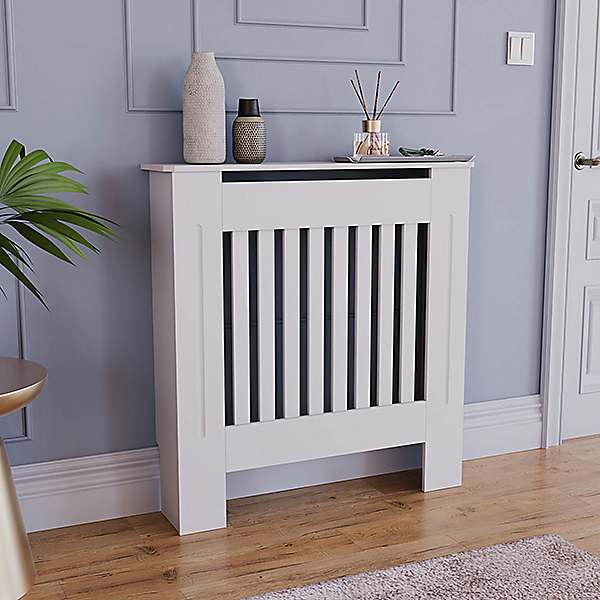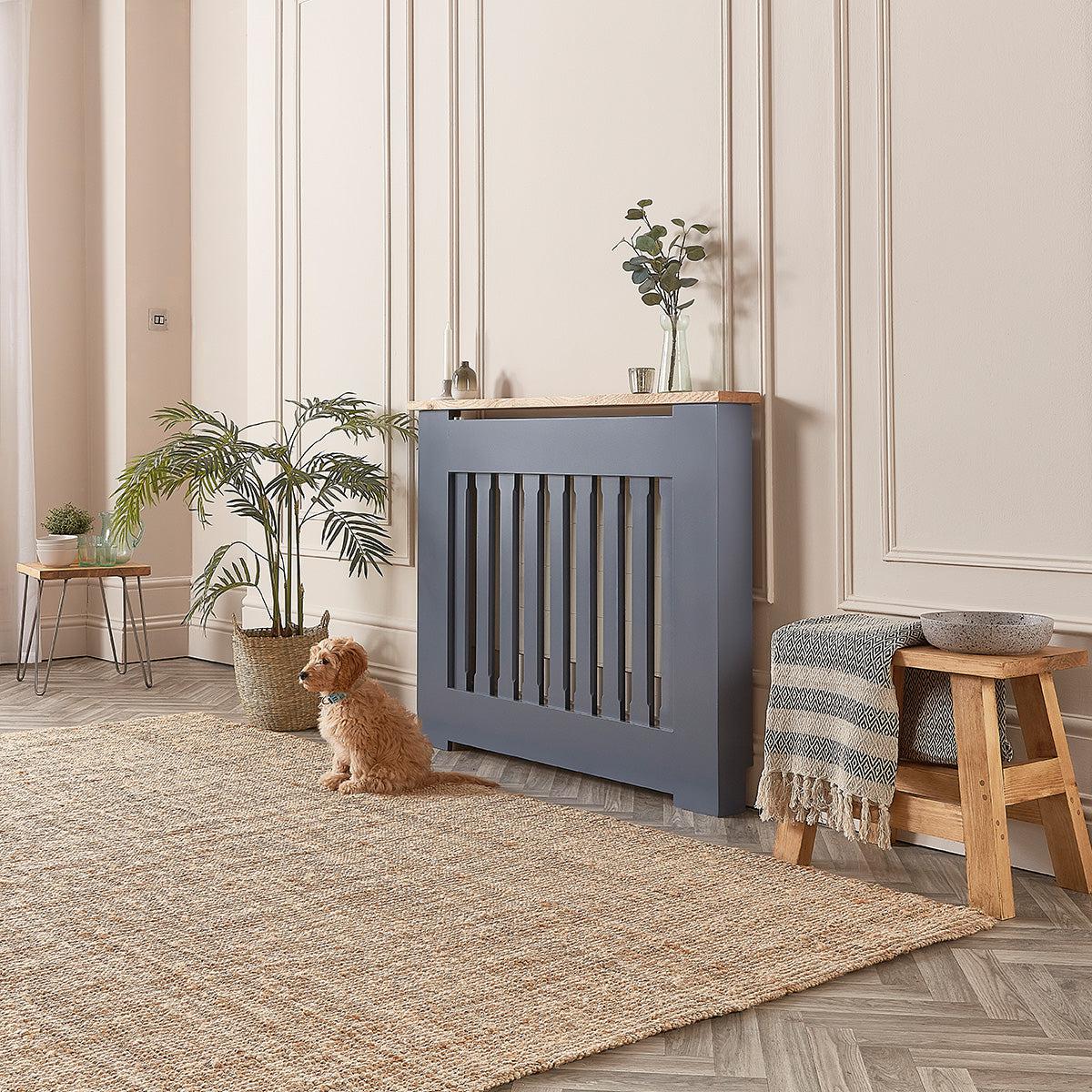Why Every Home Needs a Radiator Cover for Improved Safety and Design
Why Every Home Needs a Radiator Cover for Improved Safety and Design
Blog Article
The Relevance of Radiator Covers: A Practical Overview for Homeowners
Radiator covers are typically a neglected component in home design, yet they serve numerous vital features that warrant attention. Past improving safety and security by reducing the threat of burns, these covers can significantly enhance power effectiveness and complement different aesthetic designs. Recognizing the types available and the materials ideal fit for your space can transform a practical feature into an essential part of your home's style. As you take into consideration the ramifications of integrating radiator covers, you may discover on your own questioning which alternatives line up best with your preferences and demands.
Benefits of Radiator Covers
Enhancing both aesthetic appeals and capability, radiator covers deal a variety of advantages for homeowners. By covering potentially warm surface areas, radiator covers aid to prevent unexpected burns, particularly in houses with animals or children.
In enhancement to safety, radiator covers can add to energy performance. By guiding warmth into the area rather than permitting it to dissipate right into walls or windows, these covers can help preserve a more consistent temperature. This efficiency can lead to decreased home heating costs, as homeowners might locate they can lower their thermostat setups without compromising comfort.

Kinds of Radiator Covers
Radiator covers come in a range of kinds, each made to satisfy certain requirements and aesthetic preferences of home owners. The most common styles consist of traditional, modern, and customized alternatives. Traditional radiator covers frequently include traditional materials and intricate designs, ideal for duration buildings or homes with vintage design. They normally consist of wood structures with decorative grilles, allowing heat to distribute while enhancing the room's appeal.
Contemporary radiator covers, on the various other hand, are defined by minimal layouts and sleek lines, often made from metal or crafted timber. These covers are ideal for modern homes, offering a tidy and useful appearance that matches current indoor design patterns.

Custom-made radiator covers allow house owners to customize the design to fit personal preferences or special spaces. These can be crafted from different products and can suit non-standard radiator sizes, ensuring an excellent fit within the design of the home.
Furthermore, some covers include multifunctional functions, such as integrated shelving or seats, making the most of utility while keeping visual allure. Eventually, the kind of radiator cover chosen can significantly affect both the functionality and style of living rooms.
Selecting the Right Material

Wooden covers, usually favored for their timeless look, give natural warmth and can be tarnished or repainted to match existing style. Nonetheless, they may warp or crack in high moisture environments if not correctly treated. Steel covers, on the various other hand, are heat-resistant and durable, making them excellent for high-performance heating systems. They usually can be found in various finishes, adding a modern touch, however can sometimes take away from a cozy atmosphere.
Eventually, the option of product should take into consideration factors such as area style, environment, and the planned use of the room. By selecting the ideal material, property owners can improve both the performance and aesthetic allure of their radiator covers.
Setup Tips and Techniques
Proper installation of radiator covers is crucial for ensuring their functionality and durability (Radiator cover). Determine the dimensions of your radiator precisely to select a cover that fits well without obstructing airflow. Make use of a degree to verify that the surface where the cover will relax is also
If your radiator has valves, guarantee that the cover does not obstruct access to them. For wood covers, pre-drill openings for screws to avoid splitting, and make use of ideal bolts that can sustain the cover's weight.
If your radiator is positioned under a window, consider leaving a small space at the base of the cover to promote air flow. Furthermore, avoid positioning heavy objects on top of the radiator cover, as this can jeopardize its architectural honesty. Finally, evaluate your installation regularly to make certain that the cover continues to be securely in location and does not restrain the radiator's efficiency. Adhering to these pointers will certainly aid you attain an effective installation, boosting both appearances and efficiency.
Preserving Your Radiator Covers
Normal maintenance of your radiator covers check these guys out is vital to ensure their longevity and aesthetic allure. Over time, dust and dust can accumulate on the surface, interfering with their look and possibly impacting their performance. To maintain your radiator covers, begin by dusting them frequently with a soft cloth or read the article microfiber duster. This straightforward action prevents the accumulation of crud and maintains them looking brightened.
Occasionally, it is smart to do a much deeper tidy. Get rid of any detachable panels and wash them with cozy soapy water. Guarantee they are entirely dry before reattaching to stay clear of moisture-related concerns. Furthermore, examine the covers for any kind of signs of damages, such as damages or scrapes. Dealing with these problems without delay can avoid additional degeneration.
If your radiator covers are repainted or ended up, consider reapplying paint or sealant every few years to maintain their safety layer. This not only enhances their look but likewise protects against corrosion and corrosion. Be careful of positioning hefty items on top of the covers, as this can lead to buckling or bending. By adhering to these upkeep techniques, you can expand the life of your radiator covers and keep your home looking its ideal.
Final Thought
In conclusion, radiator covers play a substantial duty in improving safety, power efficiency, and aesthetic allure within domestic areas. Appropriate installation and upkeep further enhance their effectiveness and long life, making radiator covers a useful investment for homeowners looking for both capability and layout cohesion.
By covering possibly hot surfaces, radiator covers original site aid to stop unintentional burns, particularly in households with kids or pets.Furthermore, radiator covers offer as an ornamental aspect, flawlessly integrating radiators right into the overall layout of a room. Typical radiator covers frequently feature detailed designs and traditional materials, ideal for duration residential or commercial properties or homes with vintage style. By selecting the best material, home owners can improve both the capability and visual appeal of their radiator covers.
For wooden covers, pre-drill openings for screws to prevent splitting, and use appropriate bolts that can sustain the cover's weight. - Radiator cover
Report this page